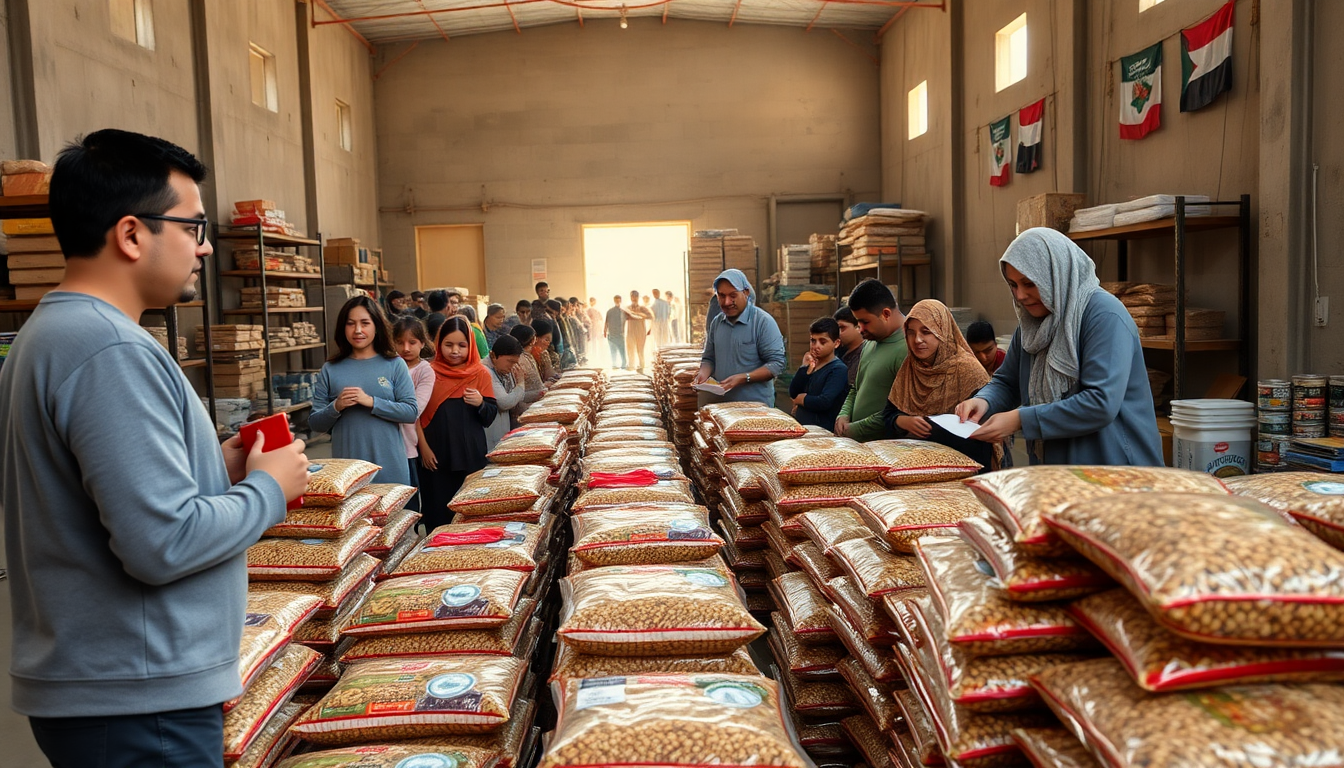Table of Contents
In a notable effort to enhance the distribution of humanitarian aid in Gaza, the Gaza Humanitarian Foundation (GHF) has introduced a new pilot program aimed at making assistance more accessible for families in need. This initiative is a timely response to the ongoing humanitarian crisis in the region, addressing the hurdles that vulnerable populations face when collecting aid.
By allowing families to reserve aid parcels in advance, the program not only promotes dignity but also ensures fair access to vital food supplies. Isn’t it encouraging to see such innovative approaches in action?
Understanding the New Distribution Model
The GHF’s fresh approach directly tackles the inequalities observed in traditional aid distribution methods, which often prioritize a first-come, first-served basis.
This has historically put women, children, and the elderly at a disadvantage, especially when competing against younger, more agile individuals. So, how does the new pilot program work? Launched in the Saudi Neighborhood with 350 participants, this model offers a safer, more predictable way for families to obtain food aid, significantly reducing the chaos that typically accompanies distribution days.
Here’s how it works: trained local workers will invite beneficiaries to join the program voluntarily. Once enrolled, participants receive an identification card featuring their photo and a unique number, enabling them to reserve aid parcels for specific days. This means no more rushing for supplies, allowing recipients to collect their essentials in a more dignified and organized manner.
Wouldn’t that make a difference in people’s lives?
John Acree, the GHF’s Executive Director, emphasized the importance of this pilot program, stating that it exemplifies the organization’s commitment to evolving alongside the needs of the Gaza community. By listening to community feedback and learning from successful models used by other humanitarian organizations around the world, the GHF strives to create a distribution process that is both effective and respectful of the dignity of those it serves.
Community-Centric Features of the Program
One of the standout aspects of this pilot program is its focus on the specific needs of women and families. The GHF has introduced women-only days and lanes, recognizing the unique challenges that women face in accessing aid.
This thoughtful approach highlights the GHF’s dedication to inclusivity. Isn’t it refreshing to see organizations actively working to address these disparities?
Moreover, beneficiaries can create online profiles to share information about their household size, ensuring that aid distribution aligns with their specific needs. This personalized approach not only streamlines the distribution process but also builds trust and engagement between the GHF and the communities it serves. How impactful could this be for families struggling to make ends meet?
As the program rolls out, the GHF plans to expand its distribution sites and increase the number of participants, aiming for a comprehensive system that adapts to the changing humanitarian landscape in Gaza. They are committed to secure data practices, ensuring that participants’ information remains confidential and is used solely to improve aid delivery.
Future Implications and Broader Context
The launch of this pilot program is timely, as Gaza continues to face a humanitarian crisis exacerbated by conflict and economic struggles. With over 125 million meals delivered since the GHF began its operations, the foundation’s work is crucial in tackling food insecurity in the region. The U.S. government has also been instrumental, contributing significant funds to support these initiatives and encouraging other nations to step up their humanitarian efforts.
As the GHF refines its distribution model and expands its operations, it sets a benchmark for humanitarian organizations working in conflict zones. The focus on community feedback, tailored services, and efficient distribution systems could serve as a blueprint for similar initiatives globally. Isn’t it inspiring to think about how this could reshape the future of humanitarian aid?
In conclusion, the Gaza Humanitarian Foundation’s new pilot program marks an important advancement in humanitarian aid distribution, showcasing a commitment to innovation and community engagement. As the program scales up, it promises to transform how aid is delivered, ensuring that families in Gaza can access essential supplies with greater ease and dignity. What will this mean for the future of humanitarian efforts in conflict areas?





